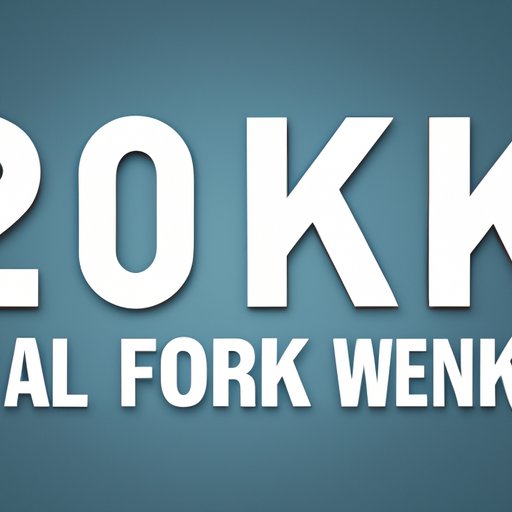
Introduction
As you work towards retirement, it can be easy to lose track of 401k accounts that may have been left behind from previous employers. A 401k is a retirement account that allows workers to save for retirement by automatically deducting contributions from their paychecks. If you’ve had multiple jobs over the years, it’s possible that you have old 401k accounts that you’ve forgotten about. Locating these accounts is important for financial planning, and could result in tens of thousands of dollars of additional retirement savings. This article will provide a step-by-step guide on how to find old 401k accounts.
Check Old Tax Documents
One of the simplest ways to locate old 401k accounts is to search through old tax documents. Look for W-2 forms or 1099-R forms that show distributions from a 401k account. These forms will often include the name of the employer who sponsored the plan, as well as the name of the plan administrator. If you have this information, you can use it to contact the former employer or plan administrator to inquire about your old account.
Reach Out to Past Employers or HR Departments
If you have trouble locating old 401k accounts through tax documents, reach out to past employers or Human Resources (HR) departments directly. When doing so, be professional and polite in your inquiries. Call or send an email to the company’s HR department politely asking if they could locate any information regarding your retirement plan with their organization. It is important that you also have your personal identification information available, as it’s standard procedure for employers to ask for your name, Social Security Number, and any other relevant information when inquiring about a former employee’s benefits.
Use Online Sources
There are also a number of online sources that can be used to find old 401k accounts. Two of the most prominent resources are the National Registry of Unclaimed Retirement Accounts (NRURA) and the Pension Benefit Guaranty Corporation (PBGC). The NRURA was established by the National Association of Unclaimed Property Administrators (NAUPA) to help individuals locate unclaimed retirement benefits. The PBGC is a government organization that provides pension benefits to employees whose employers have terminated their pensions and can no longer meet their obligations. Individuals can use both resources to search for lost or forgotten 401k accounts.
To use the NRURA, simply visit their website and search for your name to see if any potential matches come up. If any potential matches do come up, you will then be instructed to contact the appropriate administrator to make your claim based on the instructions provided on the website. To use the PBGC website, you will need to provide personal identification information such as your Social Security number. If you locate an old 401k account through the PBGC website, you will have to follow up on it and make the necessary claim.
Consider Working with a Financial Professional
Finally, if you are having difficulty locating an old 401k account, consider working with a financial professional to help in your search. A financial advisor can provide guidance on how to locate lost accounts, as well as provide an overall financial assessment and planning. When considering a financial professional, be sure to research and choose a trustworthy and experienced advisor. Look for an advisor with a good track record, who has been in the business for many years, and comes with credible recommendations from other clients. Also, review fees and financial services to determine what is within budget and what makes sense for your personal financial goals.
Conclusion
Locating a forgotten 401k account may seem daunting, but it is an important step in financial planning for retirement. Search your old tax documents, reach out to past employers, and take advantage of online resources to locate your old account. Consider working with a financial professional to help navigate the process. By taking these steps, you can ensure that you have all of your retirement savings in one place and can more effectively plan your financial future.




